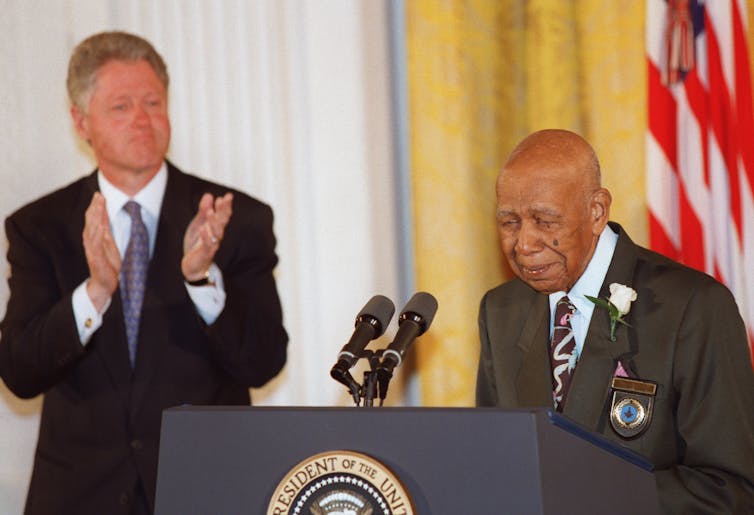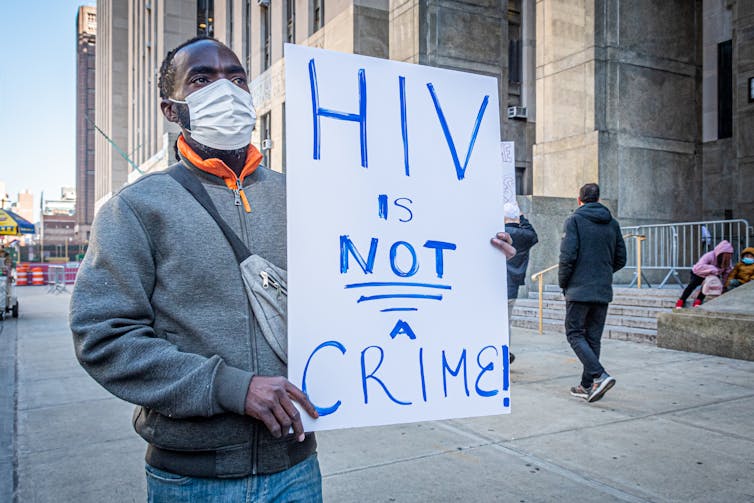Medical exploitation of Black people in America goes far beyond the cells stolen from Henrietta Lacks that produced modern day miracles

In a case that revealed the exploitation of a Black woman beginning in the 1950s and extending for 70 years, Thermo Fisher Scientific Inc. settled a lawsuit that the estate of Henrietta Lacks had filed against the biotech firm for its role in what the lawsuit called “a racially unjust medical system.”
In 1951, Lacks was diagnosed with cervical cancer at Johns Hopkins Hospital in Baltimore, one of the only hospitals in the area that would treat African Americans at the time. During her treatment, a sample of her cancer cells was taken without her knowledge or consent. In the lawsuit, Thermo Fisher was accused of unjust enrichment and illegally profiting from Lacks’ genetic material. “Black suffering has fueled innumerable medical progress and profit, without just compensation or recognition,” the lawsuit said.
Henrietta Lacks’ cells, known as HeLa cells, have had a profound impact on medical science since they were first taken from Lacks in 1951. Those cells have contributed to the development of the polio vaccine, research into cancer, studies on the effects of radiation and toxic substances, gene mapping and countless other scientific pursuits.
But nearly all of these advancements happened without her and her family’s approval – or compensation.
Lacks is one of the most well-known examples of medical exploitation on a Black body. It is far from the only example.
Medical abuse is a part of Black history
In 2020, the American Public Health Association declared racism a public health crisis.
The declaration, while important, speaks solely to present inequities and plans to advance racial equity in the future. But minimal attention has been afforded to the deep historical roots of anti-Black racism in the medical industry.
Medical exploitation and intentional abuse of members of the Black community is an often overlooked part of Black history. But understanding the issue is critical in order to better analyze today’s mistrust of the medical profession by many in the Black community.
As a Black scholar who uses critical approaches to study culture, communication and health, I have my own experiences and peer-reviewed research that reveal various ways the Black community experiences racism within the health care industry.
The Tuskegee experiment is one of the most well-known examples of medical exploitation in the Black community. The federal government from 1932 to 1972 lied to around 600 men about receiving treatment for syphilis. They were studying the effects of syphilis in the men, but did not, in fact, treat it in 399 of the men.
Many are shocked to find out that the study lasted 40 years.

The cautionary tale of the flawed Tuskegee experiment revolutionized how research was conducted and had various implications for the Black community.
But as revealed in medical ethicist Harriet A. Washington’s groundbreaking book “Medical Apartheid,” the medical exploitation of the Black community extended far beyond Tuskegee.
Grave robbing in Black communities
The 18th and 19th centuries ushered in a new method of medicine focused on increased anatomical knowledge and dissections.
In turn, more cadavers were needed, but the demand for cadavers far exceeded the supply. Moreover, at the time, social attitudes toward dissection and dismemberment of a corpse were not positive; they were primarily perceived as punishment for the most heinous criminals.
The solution at the time was grave robbing.
People would steal not only the bodies of the enslaved who had died but also the corpses of Black men, women and children from their graves and sell them to medical schools.
At the turn of the 18th century, most of New York City’s dissection tables were full of Black bodies, despite members of the Black community’s accounting for only 15% of the population at the time.
This practice was also extremely common in Maryland and Virginia. In fact, Virginia Commonwealth University officially apologized for this practice in September 2022.
But in early 2023, Virginia lawmakers failed to pass a resolution formally acknowledging and apologizing for this inhumane treatment in their commonwealth.
Unethical experiments on the incarcerated
From the 1950s through the 1970s, Philadelphia health officials allowed the prominent researcher Dr. Albert M. Kligman to conduct dangerous experiments on incarcerated people, most of whom were Black.
Kligman repeatedly and purposely exposed Black men to dermatological, biochemical and pharmaceutical experiments. One of the most significant was testing dioxin, the toxic chemical in the biochemical weapon Agent Orange.
The city of Philadelphia and related institutions officially apologized in October 2022, but the apology does not remedy the lifelong scars and lingering health impacts from the experiments.
This practice is not only a relic of the past.
Incarcerated individuals in Arkansas were given a cocktail of drugs, including Ivermectin, to treat COVID-19. It is important to note that Ivermectin was not and has not been approved by the FDA for treatment of COVID-19.
After suffering a long list of side effects, the men were informed that one of the drugs they received was Ivermectin, a drug usually used to treat cows and horses.
This abuse of Black bodies who were incarcerated did not affect just men. Black women experienced abuse and exploitation in a different form.
They were often forcibly sterilized without their consent.
Between 1909 and 1979, California forcibly – and legally – sterilized around 20,000 women, most of whom were Black women and other women of color who were incarcerated or under state guardianship because of some perceived incapacity.
In North Carolina, sterilizations were also used against Black women in state institutions to “weed out any feeble-minded.”
Why it matters
Acknowledging the full history of America’s medical industry is crucial to better understanding and combating race-based health disparities in the Black community.

It is also important to show how racism is still prevalent in contemporary medicine and public health.
Black women continue to die during childbirth more than others. Black men have the shortest life span of any U.S. demographic represented in current data, and the Black community overall has the shortest survival rate of any racial group for most cancers.
Systemic racism and negative attitudes from medical personnel are often to blame. Black men are often viewed negatively by doctors. Many Black cancer patients are not offered the opportunity to participate in clinical trials that could help them.
A groundbreaking study published in Psychological and Cognitive Sciences in 2016 revealed a somber truth: Some medical professionals still believe there are biological differences between Black and white patients.
In turn, they are less likely to treat Black patients for pain. The study further found that nearly half of the medical students in the study believed Black people have less sensitive nerve endings.
It’s my belief that revealing the dark history of medical racism is key to making sure that past injustices do not recur.
Deion Scott Hawkins, Assistant Professor of Argumentation & Advocacy, Emerson College
This article is republished from The Conversation under a Creative Commons license. Read the original article.

 En
En  Ar
Ar